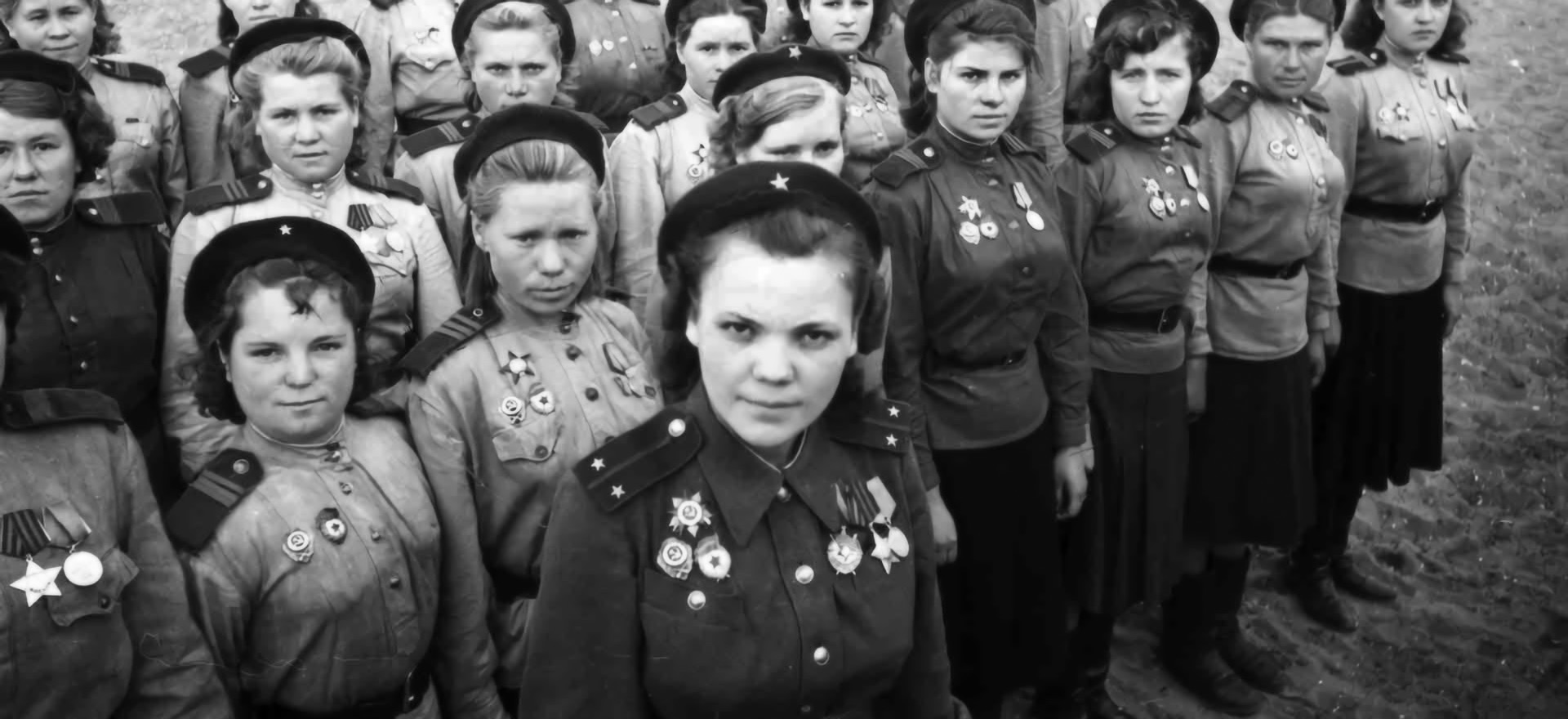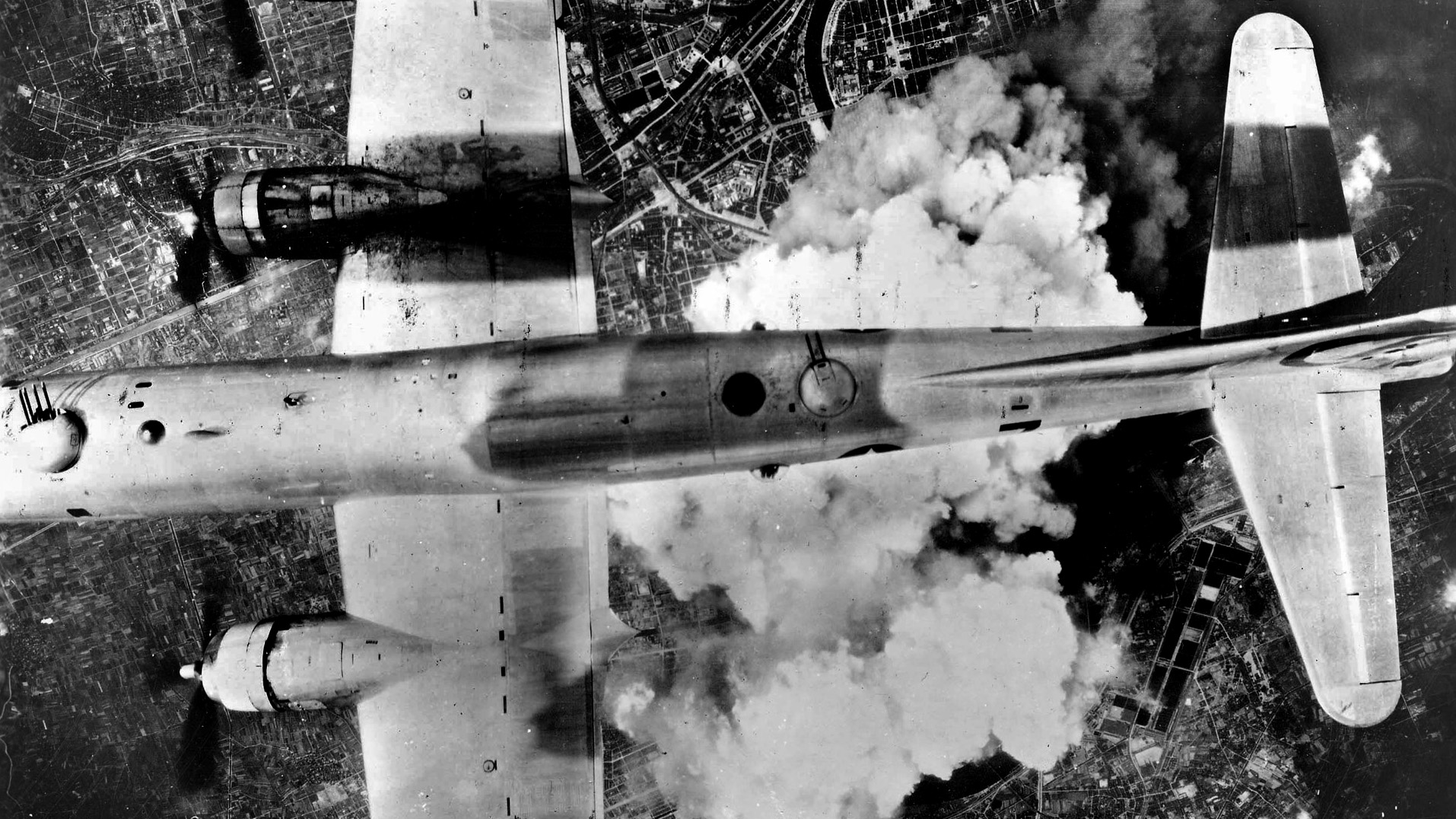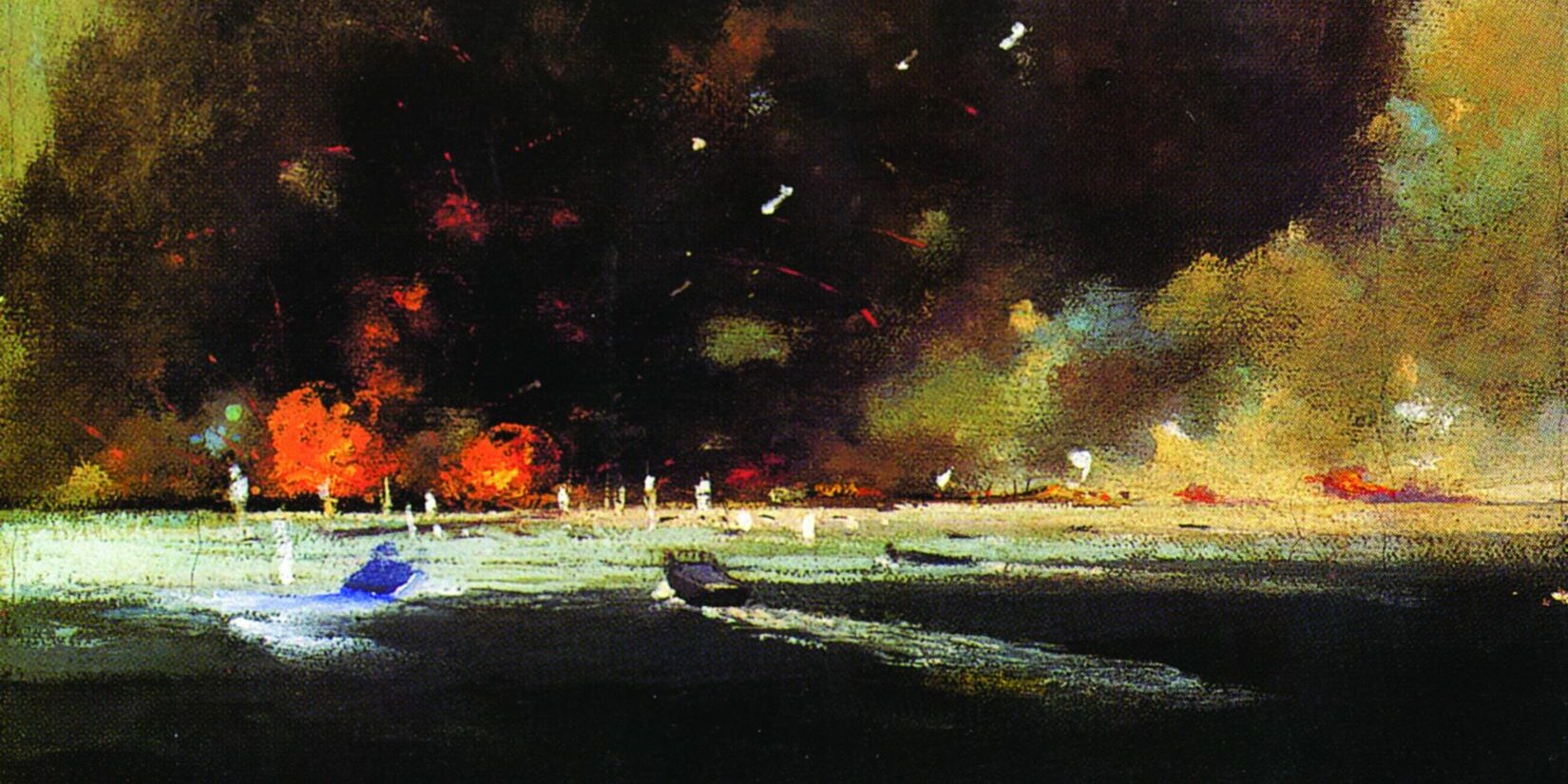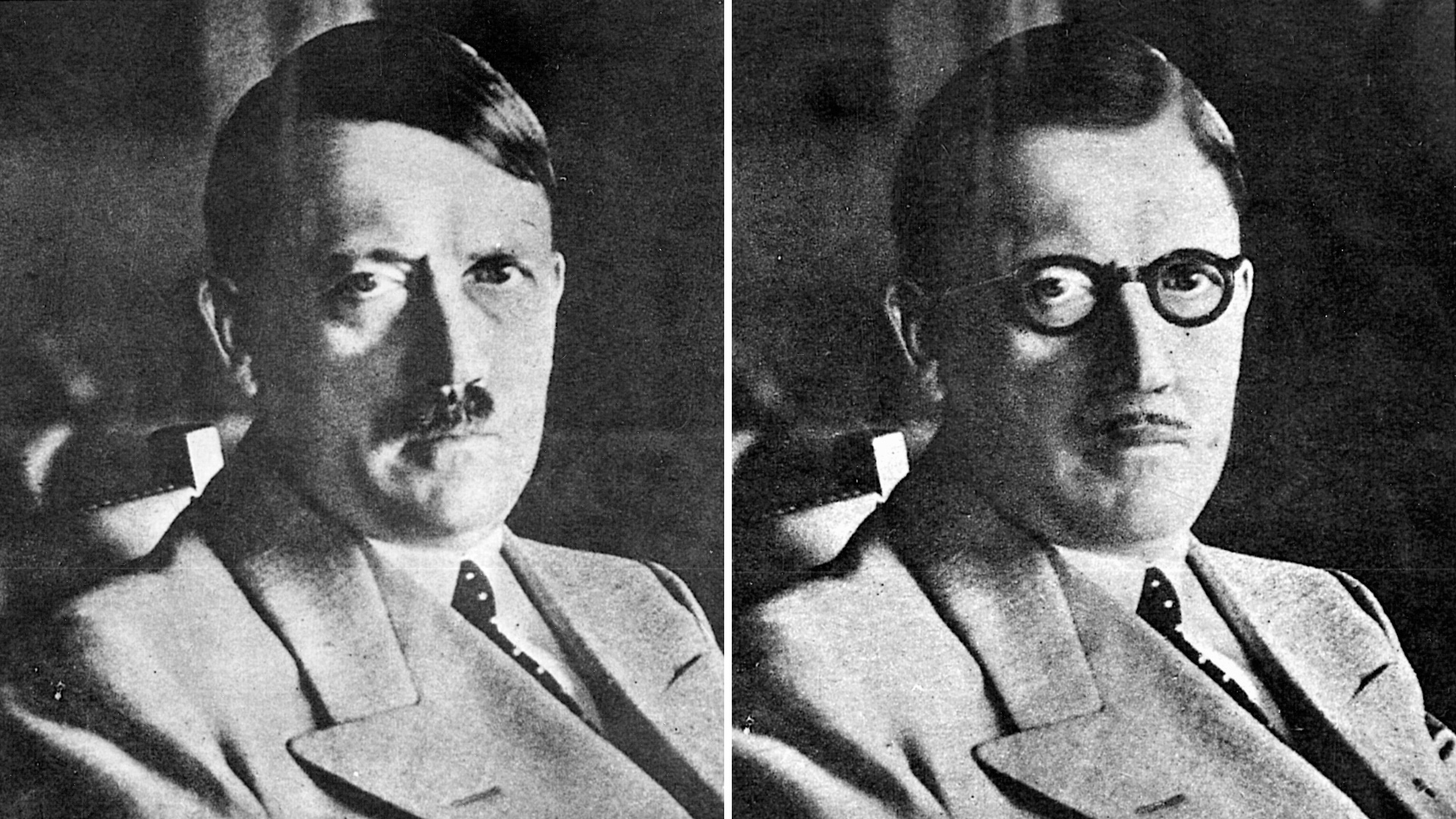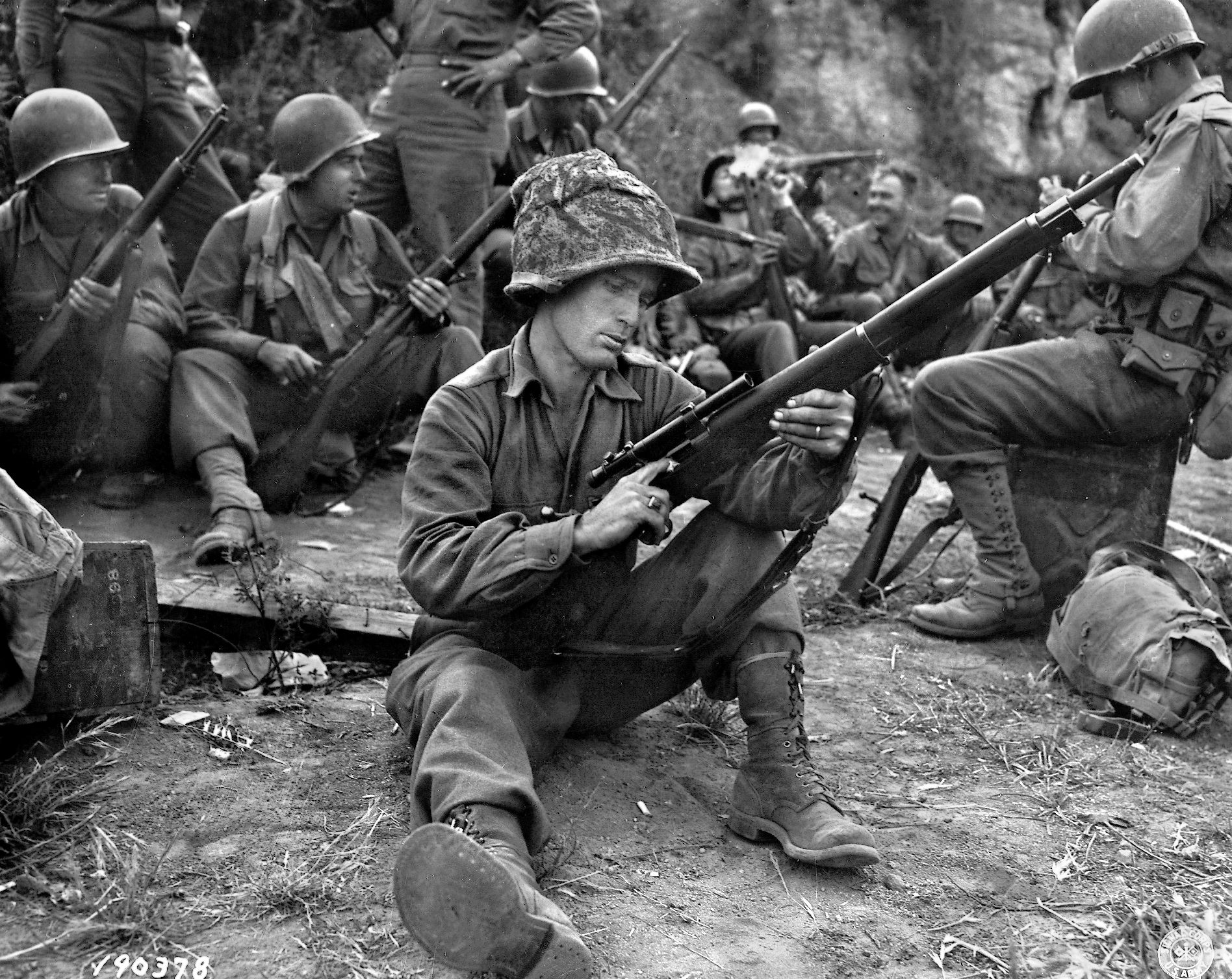By Christopher Miskimon
As Gene Metcalfe floated down toward the earth in his parachute, the first thing he saw below him was a German soldier walking down a path with girl on his arm. As he watched, the German pushed the woman into a nearby ditch and took off running. Another German in a farmhouse was shooting at a nearby American sergeant, also still descending in his parachute. The sergeant’s parachute was oscillating, swinging him back and forth. The German and the sergeant were alternately shooting at each other, the German ducking back into the farmhouse between shots.
As Gene still floated downward, the American sergeant hit the ground. Moving quickly, he got out of his parachute and took off in a sprint, charging toward the farmhouse where the German had taken refuge. Reaching it, he pulled the pin on a grenade and tossed it through a window. Following the explosion, the sergeant rushed into the house to finish the enemy inside. Gene, still in the air, could not tell his comrade he saw the German flee out a back door and run into a nearby forest. Afterward, Gene realized there were German antiaircraft batteries and several machine-gun nests surrounding each battery. These gun emplacements sat at the opposite end of the field Gene was landing in.
 Finally, Gene came down, luckily in a spot out of the Germans’ line of fire. As he gathered in his parachute, he cut several panels out; he might need them to stay warm later. As he finished, other paratroopers formed around him to make a patrol. More paratroopers moved out to destroy the German guns. Gene stayed with 18 men in the patrol. Together they set out across the meadow toward a tree line. Beyond lay the road toward the Dutch town of Nijmegen.
Finally, Gene came down, luckily in a spot out of the Germans’ line of fire. As he gathered in his parachute, he cut several panels out; he might need them to stay warm later. As he finished, other paratroopers formed around him to make a patrol. More paratroopers moved out to destroy the German guns. Gene stayed with 18 men in the patrol. Together they set out across the meadow toward a tree line. Beyond lay the road toward the Dutch town of Nijmegen.
Later that night, the patrol moved toward the city, walking down a sunken road with Gene in the lead. He felt almost claustrophobic with the berms on each side of him. An intersection lay ahead. As he neared it, Gene realized it would be a good spot for an enemy ambush. He stopped, and the next man in line, a lieutenant named Weaver, almost bumped into him. Before he could answer, they heard something, a sound that the berms and sunken road had masked until then. It was a motor, the sound steadily growing louder. A tank was approaching, and it could not be an Allied one; there were none nearby. As they watched, a German Tiger tank lumbered into the intersection and stopped in the middle of the road, only 100 yards away. Gene had listened to stories about Tiger tanks from the Normandy veterans in his unit. Now one of these enormous metal beasts was sitting right in front of him.
Gene was soon in combat, and an exploding shell launched him through the air. A buddy got to him but thought his injuries so severe Gene would be dead in minutes. The patrol left Gene behind, the only member not to return. The wounded paratrooper survived, however. When he awoke, he was a prisoner of the Germans, the beginning of an ordeal that lasted eight months. Gene’s personal story is revealed in Left for Dead at Nijmegen: The True Story of an American Paratrooper in World War II (Marcus A. Nannini, Casemate Publishing, Havertown, PA, 2019, 229 pp., maps, photographs, $32.95, hardcover).
The story of Gene Metcalfe is well-told in this new work. A combination of battle story and POW tribulation, the book is clearly written and engaging. It paints a vivid picture of the subject’s experiences, from his decision to quit school and join the Army to his struggle for survival in a prisoner-of-war camp. The book is well illustrated, including photographs of the featured people, and there are a number of sketches made in the POW camps themselves that show aspects of life in that hellish existence. There are many books about the American airborne in Market Garden; Gene’s story is unique and significant.
 Battle of Manila: Nadir of Japanese Barbarism, 3 February – 3 March 1945 (Miguel Miranda, Pen and Sword Books, South Yorkshire, UK, 2019, 128 pp., maps, photographs, index, $22.95, softcover)
Battle of Manila: Nadir of Japanese Barbarism, 3 February – 3 March 1945 (Miguel Miranda, Pen and Sword Books, South Yorkshire, UK, 2019, 128 pp., maps, photographs, index, $22.95, softcover)
By early 1945, the Philippine city of Manila was in its fourth year of Japanese occupation. That control was nearly over as the U.S. Army returned to the islands and stood poised to retake the city. Liberating Manila became increasingly important as the Americans realized the threat posed to the thousands of Filipino citizens and foreign prisoners held in internment camps in the city.
Those in the camps were at risk of execution by their captors as the Japanese were inexorably pushed back. Meanwhile, Japanese death squads slaughtered Filipino civilians for various reasons, or perhaps no reason at all. Even those civilians not deliberately targeted were trapped between two warring armies, one of which was determined to fight to the death. Tragically, retaking Manila from Imperial Japan left the city in ruins, filled with the bodies of soldiers and civilians alike.
This concise volume is packed with the details of the Battle of Manila, told from multiple points of view. It is extensively researched and well illustrated, including good maps. More than a simple retelling of the battle, the author delves into the atrocities committed by the Japanese both before and during the fighting. Attention is also given to the aftermath of the battle and its effects on subsequent Filipino life and history.
 Retribution: The Soviet Reconquest of Western Ukraine 1943 – 1944 (Prit Buttar, Osprey Publishing, Oxford, UK, 2019, 480 pp., maps, photographs, notes, bibliography, index, $35.00, hardcover)
Retribution: The Soviet Reconquest of Western Ukraine 1943 – 1944 (Prit Buttar, Osprey Publishing, Oxford, UK, 2019, 480 pp., maps, photographs, notes, bibliography, index, $35.00, hardcover)
The Battle of Kursk unalterably shifted the initiative on the Eastern Front from Nazi Germany to the Soviet Union. After that critical battle ended in German defeat, their forces were depleted and in a desperate situation. The subsequent Soviet offensive was a nearly constant series of battles conducted by the increasingly sophisticated Soviet Army, which now boasted a force of six million troops. The Germans were pushed inexorably back to the Dnieper River, while the Wehrmacht forces on the Kuban Peninsula south of Rostov were pushed back into the Crimea. By the end of 1943 the front lines were pushed hundreds of miles to the west, with the Red Army poised for further advances. Both sides suffered horribly in the fighting, but despite sustaining heavier numerical losses, the Soviets could make good with new production. Meanwhile, the Germans were losing irreplaceable soldiers and were beginning to run out of supplies and raw materials.
The author is an established expert on the Eastern Front during both world wars, with numerous prior works covering the two conflicts. This new book continues his established pattern of in-depth research and a readable, well-organized narrative. Firsthand accounts of frontline soldiers on both sides are mixed with analysis of high-level decision-making and technological progression to provide a balanced, all-around view of this phase of history’s largest conflict.
 Arnhem 1944: The Human Tragedy of the Bridge Too Far (Dilip Sarkar, Frontline Books, S. Yorkshire UK, 2018, 362 pp., maps, photographs, bibliography, $42.95, hardcover)
Arnhem 1944: The Human Tragedy of the Bridge Too Far (Dilip Sarkar, Frontline Books, S. Yorkshire UK, 2018, 362 pp., maps, photographs, bibliography, $42.95, hardcover)
The battle for the Arnhem bridges in September 1944 was full of the small tragedies and acts of courage that populate warfare. Private Frank Willingham died trying to save civilians. Sergeant George Thomas died manning a 17-pounder anti-tank gun, having just fired on an enemy position when his gun received a direct hit. Glider pilot Sergeant James Sharrock might have died in some woods during a patrol, but to this day no one knows his fate for sure. Polish paratrooper Czeslaw Gajewnik drowned while trying to swim a river to escape the enemy at Oosterbeek. His body was found on the banks of the Rhine next to a Canadian sapper named Harold Magnusson. Major Frank Tate led a group of British paratroopers out of their position in Arnhem during an attempted breakout. German troop infiltrations were all around, and no one knew for certain where they all were. As Tate’s group passed a row of burning buildings, a burst of machine-gun fire snapped through them, and Tate was killed instantly.
All these stories and more are told in great detail in this new book. The author takes an unconventional approach and focuses on the individual stories of soldiers and civilians who died at Arnhem. Each of 18 chapters tells the story of one or two Allied soldiers or local civilians who perished, with an added chapter on the German losses during the fighting. The book is an interesting look at the cost of Operation Market Garden, centered on its final goal of the Arnhem bridges.
 Waffen-SS: Hitler’s Army at War (Adrian Gilbert, Da Capo Press, Boston, MA, 2019, 512 pp., maps, photographs, appendices, notes, bibliography, index, $32.50, hardcover)
Waffen-SS: Hitler’s Army at War (Adrian Gilbert, Da Capo Press, Boston, MA, 2019, 512 pp., maps, photographs, appendices, notes, bibliography, index, $32.50, hardcover)
The Waffen SS was the military wing of the Nazi Party. It was a major portion of the larger SS organization, which also administered the concentration camps and oversaw intelligence and economic activity. Its members were known for their esprit de corps, bloody determination, and tough-minded fervor in support of Hitler’s regime.
The Waffen SS was also known for its record of battlefield success, a record irretrievably darkened by regular massacres and executions of both enemy soldiers and civilians. It was originally formed as a bodyguard for Hitler himself but later expanded into a major arm of the state through the efforts of Reichsfuhrer SS Heinrich Himmler. Throughout its short life, almost 900,000 men passed through its ranks, with a substantial number of them being Non-Germans, recruited from across Europe to fight the scourge of Communism. In the end, any military excellence they possessed was overshadowed by their infamy and service to an evil regime.
This is the first definitive one-volume history written on the Waffen SS in over 50 years. It chronicles their training, battles, and campaigns in great detail. High-ranking leaders are covered, along with the experiences of troops on the battlefield. The author also takes a fresh look at the importance of the non-German members of the Waffen SS, revealing how they were recruited, why they were needed, and comparing their effectiveness to that of their German counterparts.
 Forgotten Bastards of the Eastern Front: American Airmen behind Soviet Lines and the Collapse of the Grand Alliance (Serhii Plokhy, Oxford University Press, Oxford, UK, 2019, 362 pp., maps, photographs, notes, bibliography, index, $29.95, hardcover)
Forgotten Bastards of the Eastern Front: American Airmen behind Soviet Lines and the Collapse of the Grand Alliance (Serhii Plokhy, Oxford University Press, Oxford, UK, 2019, 362 pp., maps, photographs, notes, bibliography, index, $29.95, hardcover)
At the Tehran Conference in November 1943, American officials proposed a new combined operation to the Soviets. They wanted to open a second air front by establishing American bomber bases in Soviet territory, enabling American aircraft to strike more targets. The Americans pointed out it would aid the hard-pressed Red Army, something Soviet Premier Josef Stalin frequently asked for. The Soviet leader was initially reluctant, remembering the presence of foreign troops on Russian soil during the Revolution only two decades earlier. In early 1944, though, Stalin agreed, and soon American Boeing B-17 Flying Fortress bombers were flying from Italy to Poltava in the Ukraine. While the assigned missions were being carried out, though, problems arose that reflected the chasm between East and West. Soviet agents watched the Americans’ every move, even preventing them from having relationships with Soviet women. Eventually, the operation failed after a German air raid proved the ineffectiveness of Soviet air defenses.
It is increasingly difficult to find topics on World War II that are relatively unknown, but the author has succeeded here with a history of American flyers in the Ukraine. The author’s depth of research is impressive and ranges from high-level discussions between state leaders to the experiences of aircrew and base personnel and their interactions with their local Soviet counterparts. This new volume is a positive addition to the body of work on the air war in Europe.
 Case White: The Invasion of Poland 1939 (Robert Forczyk, Osprey Publishing, Oxford, UK, 2019, 416 pp., maps, photographs, appendices, notes, bibliography, index, $30.00, hardcover)
Case White: The Invasion of Poland 1939 (Robert Forczyk, Osprey Publishing, Oxford, UK, 2019, 416 pp., maps, photographs, appendices, notes, bibliography, index, $30.00, hardcover)
Case White was the translation of the German name for the invasion of Poland on September 1, 1939. Many histories portray it as a milk run for the German military, pitting their mechanized might against a force still employing horse cavalry and badly equipped for modern warfare. However, the truth reveals a different story. The German Army’s own equipment was largely horse-drawn, and they had small numbers of horse cavalry in their ranks, as well. Only a fraction of their army was fully mechanized. The tales of Polish horsemen charging German tanks are untrue, and while Poland possessed few tanks, those they had matched the bulk of German armor of the time. The Poles also had more anti-tank and antiaircraft guns than is commonly believed. While the Germans were ultimately victorious alongside their momentary Soviet allies, they took heavier casualties than expected and learned some hard lessons about employing their new Wehrmacht.
The author is a well-established writer on World War II, with several books to his credit. This new volume is like his previous work: detailed, well-researched and clearly written. He exposes many myths of the Polish campaign, revealing the realities of the war’s first European campaign. The book also covers the escape of thousands of Polish troops who went on to fight elsewhere and the brutality inflicted on Poland by the later occupation.
 Fire and Fortitude: The US Army in the Pacific War, 1941-1943 (John C. McManus, Dutton/Caliber, New York, NY, 2019, 640 pp., maps, photographs, notes, bibliography, index, $34.00, hardcover)
Fire and Fortitude: The US Army in the Pacific War, 1941-1943 (John C. McManus, Dutton/Caliber, New York, NY, 2019, 640 pp., maps, photographs, notes, bibliography, index, $34.00, hardcover)
At the height of the Pacific War, there were about 250,000 Marines serving in the theater. By contrast, there were 1.8 million soldiers in the Pacific by war’s end. Army troops were at Pearl Harbor, fought for months to the bitter conclusion in the Philippines, and were murdered in the Bataan Death March. The U.S. Army went to Australia when that nation seemed in danger of invasion before joining the Marine Corps in the deadly, hellish slog of taking one island after another away from Imperial Japan. Army troops went ashore at Makin Island in the Gilbert chain and continued across the South and Central Pacific. The Army’s advance took time, as America started the war an unprepared, regional power and had to evolve into the military giant it became in just a few years. Along with the nation, the Army learned and grew, becoming an instrument that stood fully alongside the other services as they fought Japan first to a standstill and then into retreat.
The Pacific is generally seen as a Navy and Marine Corps war, with the massive contribution of the Army minimized or simply neglected. This new book delves into the personalities and actions of the major leaders, along with the brutality of the actual fighting and what it portended for the future. The author also writes about how the Army’s work with various allies affected the war and later postwar events, particularly in China and Southeast Asia. This is a sweeping, interesting account of an army at war.
 The Hidden Nazi: The Untold Story of America’s Deal with the Devil (Dean Reuter with Colm Lowery and Keith Chester, Regnery History, Washington, D.C., 2019, 396 pp., photographs, notes, bibliography, $29.99, hardcover)
The Hidden Nazi: The Untold Story of America’s Deal with the Devil (Dean Reuter with Colm Lowery and Keith Chester, Regnery History, Washington, D.C., 2019, 396 pp., photographs, notes, bibliography, $29.99, hardcover)
There were many questions surrounding the fate of SS General Hans Kammler. During World War II, Kammler was responsible for the construction of concentration camps and slave labor sites. Among his many crimes, he personally changed the design of the Auschwitz camp to increase crowding. This ensured the prisoners’ increased suffering from epidemic disease. Albert Speer, the Third Reich’s Armaments Minister, referred to Kammler as Heinrich Himmler’s “most brutal and most ruthless henchman.” One of the commandants of Auschwitz even stated Kammler “demanded too much work from a man.” The SS general was reported to have committed suicide at the end of the war, though there was no proof of his death.
The authors of this book used government documents unseen since the 1940s to reveal that Kammler was alive and in American custody for months after his supposed suicide. He was never put on trial for his crimes and never reentered the public eye. This interesting investigative story delves into why Kammler was kept alive and unpunished despite his guilt. The book contains an extended cast of characters from Nazi Germany as it recounts Kammler’s actions both during and after the war and the various people he interacted with as he did his devil’s work.
 Spitfire! The Full Story of a Unique Battle of Britain Fighter Squadron (Dilip Sakkara MBE, Air World Books, Philadelphia, PA, 2019, 484 pp., maps, photographs, appendices, notes, bibliography, index, $59.95, hardcover)
Spitfire! The Full Story of a Unique Battle of Britain Fighter Squadron (Dilip Sakkara MBE, Air World Books, Philadelphia, PA, 2019, 484 pp., maps, photographs, appendices, notes, bibliography, index, $59.95, hardcover)
“I found myself alone and surrounded by Me-109s, so decided attack was the best form of defence: the usual fight ensued during which I definitely hit at least five of them, but only two were definitely shot down, both in flames.” These words from Wing Commander George Unwin are at the same time humble and reserved while speaking to the aggressiveness and esprit de corps of the British fighter pilot during the Battle of Britain. In particular, the RAF’s No. 19 Squadron fought its portion of the war with dedication and courage, through alternating periods of boredom, terror, and action.
This book covers the men of No. 19 Squadron in great detail, treating them as a “Band of Brothers” within the Royal Air Force, exemplary of that service’s activity during the war. The book is full of personal vignettes of both pilots and aircrew, revealing their daily lives both in and out of combat. The author has had an interest in the unit for decades through its commander, Squadron Leader Brian Lane. He wrote a prior book on the unit, but this work takes advantage of the extensive information he has collected since that original work, making this new book both a second edition and a new work of it own. The book is well illustrated, with many personal and technical photographs to round out the in-depth text. A set of appendices provides added useful data.
New And Noteworthy
 German Flak Defences vs Allied Heavy Bombers: 1942-45 (Donald Nijboer, Osprey Publishing, 2019, $22.00, softcover) This is one of the few books to discuss the effectiveness of German antiaircraft defenses in the bombing campaigns. It reveals them to have been more useful than is often thought.
German Flak Defences vs Allied Heavy Bombers: 1942-45 (Donald Nijboer, Osprey Publishing, 2019, $22.00, softcover) This is one of the few books to discuss the effectiveness of German antiaircraft defenses in the bombing campaigns. It reveals them to have been more useful than is often thought.
The Battle of Okinawa: The Pacific War’s Last Invasion (Jon Diamond, Pen and Sword Books, 2019, $28.95, softcover) This latest volume in the long-running Images of War series contains over a hundred photos of the bitter struggle for Okinawa. Text and maps accompany the imagery.
Messerschmitt BF 109: The Latter Years (Chris Goss, Frontline Books, 2019, $22.95, softcover) This new book in the Air War Archive series exhibits rare photographs of the Messerschmitt BF-109 from the Eastern Front and the end of the war. It also includes pictures of captured aircraft and those in foreign service.
Scholars of Mayhem: My Father’s Secret War in Nazi-Occupied France (Daniel C. Guiet and Timothy K. Smith, Penguin Press, 2019, $28.00, hardcover) Jean Guiet was a member of the secretive British Special Operations Executive. This is the story of his missions behind enemy lines in France.
Escape from Stalag Luft III: The True Story of my Successful Escape (Bram Vanderstok, Greenhill Books, 2019, 34.95, hardcover) The author escaped from a German POW camp on March 24, 1944. This memoir lays out his experiences, which were used as a basis for the movie The Great Escape.
 1931: Debt, Crisis, and the Rise of Hitler (Tobias Straumann, Oxford University Press, 2019, $24.95, hardcover) The German financial collapse of 1931 was decisive in the rise of the Nazis. This book reveals how Hitler benefitted from the calamity.
1931: Debt, Crisis, and the Rise of Hitler (Tobias Straumann, Oxford University Press, 2019, $24.95, hardcover) The German financial collapse of 1931 was decisive in the rise of the Nazis. This book reveals how Hitler benefitted from the calamity.
The Dawn of Carrier Strike and the World of Lieutenant W. P. Lucy DSO RN (David Hobbs, Seaforth Publishing, 2019, $70.00, hardcover) This book studies the rise of carrier aviation in the Royal Navy largely through the records and photographs of William Lucy. Lucy later became Britain’s first air ace of World War II.
Secret Wartime Britain: Hidden Places That Helped Win the Second World War (Colin Philpott, Pen and Sword Books, 2019, $42.95, hardcover) England was dotted with secret locations dedicated to the war effort. This work documents many of them, often still largely unknown to the public.
Hitler (Peter Longerich, Oxford University Press, 2019, $39.95, hardcover) The author is an acclaimed German historian. In this new book he presents a provocative view of Hitler and his crimes.
Smithsonian World War II: Map by Map (Various authors, Penguin Random House, 2019, $40.00, hardcover) Containing over 100 detailed maps, this new work graphically lays out the course of the war. Numerous photographs accompany the maps, and this book is suitable for younger readers.


